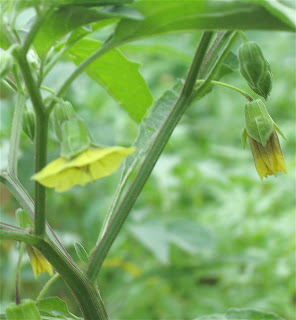 Lincoln Park is a fairly typical city park, big trees, regularly mowed grass and a pond. There are a few small areas of native planting but the vast majority of it follows the heavily manicured theme. That is until you get to the grounds that surround the museum. All the museum grounds are planted with native prairie plants. Some areas are more successful than others but gradually over the years it has taken shape. Prairie planting is not for everyone, for the long
Lincoln Park is a fairly typical city park, big trees, regularly mowed grass and a pond. There are a few small areas of native planting but the vast majority of it follows the heavily manicured theme. That is until you get to the grounds that surround the museum. All the museum grounds are planted with native prairie plants. Some areas are more successful than others but gradually over the years it has taken shape. Prairie planting is not for everyone, for the long winter months there really isn't anything very attractive about it but at this time of year it suddenly takes on a whole new lease on life and leaves the rest of the park in the dust!
winter months there really isn't anything very attractive about it but at this time of year it suddenly takes on a whole new lease on life and leaves the rest of the park in the dust!One of the most striking plants is the statuesque Compass Plant Silphium laciniatum which can grow up to eight feet tall and towers over everything. The sap of this plant can be dried and chewed like gum!

Another common prairie flower is the cone flower, this is the Pale Purple Coneflower Echinacea pallida The roots are used to make herbal medicines and tonics. Illegal root digging poses a major threat to the plant in some areas.

One of the brightest splashes of colour comes from the vivid Butterfly Milkweed Asclepias tuberosa it really is hard to miss this stunning orange bloom. The roots have been used as both food and medicine in the past. Another common name for this plant is Pleurisy Root which tells you pretty clearly what the medicine it produces was used for.

The Common Milkweed Asclepias syriaca is much more subtle in its colour but if you take a close look at the blossoms they are no less beautiful. Both these milkweeds prove utterly irresistible to butterflies and this one will be alive with Monarchs very soon. The fluffy seed hairs produced by the Common Milkweed used to be used to stuff lifejackets.

In amongst the towering plants and the vividly coloured ones it would be easy to overlook the Lance-Leaved Ground Cherry Physalis virginiana with its delicate pale yellow ground facing flowers. But they too are delightful in a far more subtle way. The ripe fruits have been used as food, but take care, the unripe fruits are poisonous.

A particular favorite of mine is the delicate pink/purple flowers of the Wild Bergamot Monarda fistulosa This member of the mint family is popular with both hummingbirds and butterflies.

The White Wild Indigo Baptisia alba is a member of the bean family and can grow up to six feet tall, apparently they can live for up to one hundred years! As its name would suggest this plant was used for dye but it is not of the same quality as the Old World Indigo Plant.

Of course if you return an area to original native planting, you have to expect the original native species who used to inhabit it to make an appearance too. Although the rabbit is the bane of every gardeners life it is a natural part of the prairie ecosystem. We are now seeing an influx of coyotes, another natural prairie dweller, as a result of the increased rabbit presence.

Another icon of the prairie is the raucous Red-winged Blackbird Agelaius tricolor but I figured as it is always the male that is seen chattering away from every vantage point that I would show the female for a change. Although I have to admit that when I was taking this picture she was protesting pretty loudly!

As I was walking back after taking these photos I walked under a mulberry tree and this Mourning Dove Zenaida macroura was either posing to have its picture taking or so stuffed with mulberries that the thought of flying away from me was more than it could cope with. Either way as this is one of my favorite local inhabitants I just had to take the picture!
Photo Credits - CJT

2 comments:
I just realized why I am not seeing rabbits...I saw a coyote a while back and I haven't seen a rabbit since..
Ah ha! That will do it! It is the coyotes favorite snack!
Post a Comment